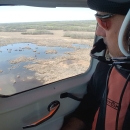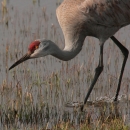The primary purpose of the Webless Migratory Gamebird Program (WMGBP) is to support activities that will improve management of the 16 species of migratory shore and upland game birds (MSUGBS) in North America. The Migratory Shore and Upland Game Bird Support Task Force, organized through the Association of Fish and Wildlife Agencies, developed a set of priority information needs by convening a series of workshops. Priorities identified at the workshops should be used to guide proposal development and will be used by the review committee to select projects that address these priority information needs. Priorities can be found within the Webless Migratory Game Bird Program webpage.
Who Needs It?
The USFWS administers financial assistance awards (grants and cooperative agreements), purchase orders, and contracts on a competitive basis for projects and studies that advance the general scientific community's understanding of MSUGB ecology and management and seeks proposals from interested parties.
Audience
Get Started
The next anticipated call for proposals will be November 2024.

